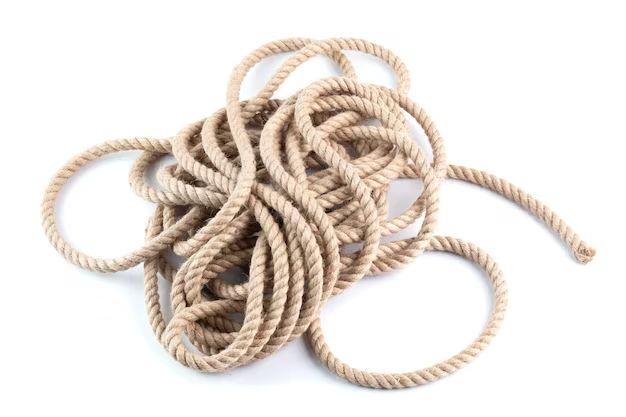When choosing a rope for a pull starter, the most important factors to consider are strength, flexibility, and durability. The rope needs to be able to withstand repeated pulling without fraying or breaking. Most small engine professionals recommend using a braided polyester rope.
Page Contents
Why Polyester Rope is Best for Pull Starters
Polyester rope is a great choice for pull starters because it offers several advantages:
- High tensile strength – Polyester has excellent strength for its size. This allows it to withstand the force applied when pulling the starter rope.
- Low stretch – Polyester stretches less than other ropes like nylon. This gives a better feel and makes it easier to pull.
- Durability – The braided construction is resistant to fraying. Polyester holds up well to repeated pulling.
- Resists wear – The fibers used in polyester ropes tend to be abrasion resistant, allowing the rope to maintain integrity.
- Weather resistance – Polyester performs well in a range of weather conditions unlike natural fiber ropes.
- Easy to grip – The braided construction gives the rope a good grip texture.
Polyester starter ropes give you the right balance of strength, stretch resistance, flexibility, and durability. While more expensive than basic utility rope, polyester’s properties make it worth the extra cost for pull starters.
Rope Size and Length
The most common rope diameters used for pull starters range from 3/16 inch to 5/16 inch. Smaller engines usually use 3/16 inch diameter rope, while larger engines may use 1/4 or 5/16 inch.
For rope length, you generally want 36 to 48 inches. The proper length gives you enough rope to get a good grip and pull without creating excessive resistance from too much coiled rope. Avoid going shorter than 36 inches or it can be difficult to get leverage.
Recommended Pull Starter Rope Sizes
| Engine Size | Rope Diameter |
|---|---|
| Up to 5 HP | 3/16 inch |
| 5-8 HP | 1/4 inch |
| 8+ HP | 5/16 inch |
Rope Construction
Look for a braided or twisted construction. Braiding creates a rope with excellent flexibility and grip. A twisted construction also works well and is usually more affordable. Solid core ropes are not recommended because they lack flexibility.
Replacing a Pull Starter Rope
Over time, starter ropes can wear out and break. Replacing the rope is straightforward:
- Remove the recoil starter assembly from the engine.
- Take out the old rope by detaching it from the pulley.
- Feed the new rope through the pulley and tie a secure knot.
- Wind the new rope onto the pulley, leaving about 3 feet extended.
- Reattach the starter assembly and pull the rope to test.
Be sure to wrap the rope neatly and evenly around the pulley. If the pulley has worn where the rope seats, replace it for longer rope life.
Where to Buy Quality Pull Starter Ropes
You can find high-quality braided polyester starter ropes from retailers that specialize in parts for small engines and outdoor power equipment. Places to buy include:
- Local small engine repair shops
- Hardware stores and home centers
- Online retailers like Jack’s Small Engines or Oregon Products
- Big box home improvement stores such as Home Depot or Lowes
For convenience, buying online is hard to beat. Look for ropes specifically marketed for use with pull starters. Prices range from $5 to $15 depending on diameter, length, and whether sold individually or in multipacks.
Key Takeaways on Rope for Pull Starters
- Use braided polyester rope for optimal performance and longevity.
- Choose a 3/16, 1/4 or 5/16 inch diameter rope based on engine size.
- Aim for a length between 36 and 48 inches.
- Look for a braided or twisted rope construction.
- Replace worn ropes to improve starting.
- Purchase from small engine parts retailers online or in-store.
Investing in a good quality polyester starter rope ensures easy, reliable pulling to get your small engine started. Take time to inspect and replace worn ropes as needed.
